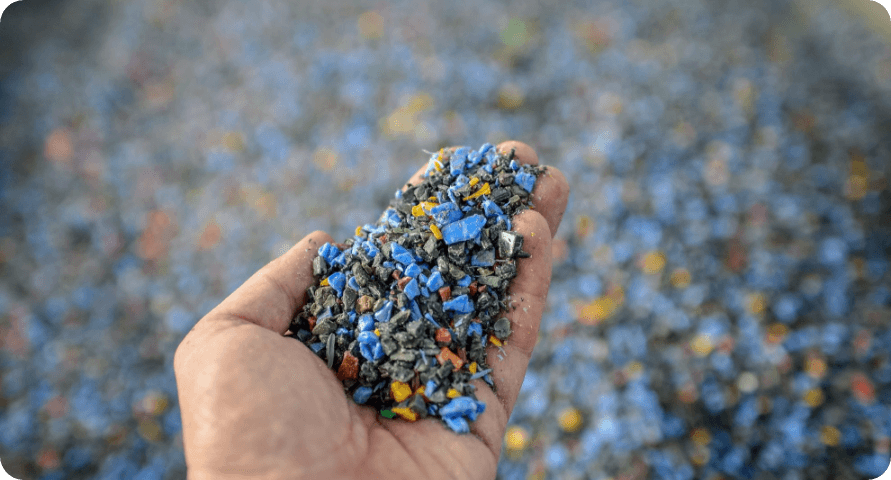Performance
3500
tonnesSince 2017, we have used more than 3,500 tonnes of PCR plastic.
26100
tonnes CO2eSince 2017, we reduced carbon emissions by 26,100 tonnes CO2e.
27900
tonnesApproximately 27,900 tonnes of recycled paper was used for main products in 2024.
In 2019, the European Commission released the European Green Deal, aiming to promote a circular economy and reduce material and resource consumption, ensuring materials are reusable and recyclable. At ASUS, our core operational philosophy is to “strive to be among the world-class green high-tech leaders and provide valuable contributions to humanity”. While strengthening corporate competitiveness, we uphold a responsible attitude towards the environment, promoting sustainable and circular material design to protect the Earth’s ecology and reduce environmental impact. To implement product sustainability, ASUS has established a “Sustainable Raw Materials Policy” aimed at enhancing the use of environmentally friendly materials in products and packaging. The policy prioritizes the selection of low-toxicity, renewable, recycled, or sustainably certified materials as specific policy guidelines.
In material applications, rare earth metals and critical minerals are utilized in IT products such as permanent magnet materials, fluorescent materials, precision ceramics, optical materials, semiconductors, and batteries, which are essential for the electronics industry. According to the “Role of Critical Minerals in Clean Energy Transitions” analysis report released by the International Energy Agency (IEA) in early May 2021, the demand for rare earth metals and critical minerals will significantly increase by 2040 under the net zero policy announced by governments. It is foreseeable that if the supply, recovery, and investment of rare earth metals and critical minerals are not planned early, the cost and risk of acquiring these substances will increase in the future. In order to obtain information on the substances contained in the products, ASUS further analyzes the current status of rare earth metals and critical minerals in the products through full material disclosure to seek recycling sources and achieve a circular economy model of recycling and utilization.
ASUS Major Product Raw Material Usage Statistics:
| Category | Usage Amount (tons/year) | |
|---|---|---|
| Non-renewable Materials (Technical Materials) | Metals and Non-metals (Plastics, Glass, Ceramics) | 63,806 |
| Renewable Materials (Biobased Materials) | Paper and Wood | 31,310 |
Overview of Critical Materials Used in ASUS’s Major Products:
| Critical Material | Usage Amount (tons/year) | Primary Application |
|---|---|---|
| Aluminum | >4,500 | Product structural component |
| Cobalt | <1 | Battery |
| Copper | >3,000 | Product structural component |
| Iron/Steel | >32,000 | Product structural components |
| Nickel | >250 | Plating |
| Critical Material | Usage Amount (tons/year) | Primary Application |
|---|---|---|
| Lithium | <100 | Battery |
| Tungsten | <1 | Connector |
| Gold | >20 | Power supply |
| Tin | >250 | Solder paste |
| Tantalum | <1 | Electronic components and metal part |

Products Applications
Among ASUS products, mainstream products contain more than 30% plastic in total weight, which accounts for the largest percentage of materials. Therefore, we cooperate with the suppliers to explore the opportunities that increase the use of post-consumer recycled (PCR) plastic as much as possible without compromising quality, function, and durability. The average PCR plastic content of ASUS’ business laptops is 5%. Moreover, ASUS developed PCR plastic with antibacterial functions by applying our innovative R&D skills. In 2024, ASUS’s core products utilized approximately 13,600 tonnes of plastic, of which approximately 1,290 tonnes were sourced from PCR plastic.
Since 2017, the cumulative use of PCR plastic has exceeded 3,500 tonnes, resulting in a cumulative reduction of over 26,100 tonnes of CO2e carbon emissions.
Annual Usage of Post-Consumer Recycled (PCR) Plastic
Since 2022, we have been exploring the incorporation of a more diverse range of environmentally friendly materials in our products. In 2024, we utilized over 22 tons of post-industrial recycled (PIR) metals, including 12 tons of PIR aluminum and 10 tons of PIR magnesium. The metal enclosure of our ExpertBook P5 business AI notebook incorporates 30% PIR metals, and the magnets used in its fans are made from 100% recycled neodymium. Additionally, the ProArt PA602 Wood Edition showcases a crafted ash wood design by the FSC™.
In collaboration with suppliers, ASUS is actively engaged in the development of recycling applications for other key materials, focusing on the critical role of cobalt, a key material in laptop batteries, aiming to recycle and reuse cobalt in the production of batteries. ASUS will continue to explore a wider variety of eco-friendly materials in our products by taking actions to support the circular economy and fulfill ESG.
Packaging Applications
Starting from 2019, ASUS has replaced PE bags with PET non-woven fabric. We increased the use of recycled pulp for the paper packaging of certain products to 90%. In 2024, recyclable packaging accounted for 93%. Approximately 27,900 tons of recycled paper were used for primary product packaging, a 62% increase compared to the baseline year (2020).
Regarding resource and ecosystem protection, Asus has been using Forest Stewardship Council (FSC) certified paper since 2020. Its application and innovation in FSC materials have been recognized by the international NGO, the Forest Stewardship Council (FSC). In 2024, Asus used over 1,090 tons of FSC-certified paper.
In terms of innovative material development, Asus combines technological innovation with environmental sustainability. In 2023-2024, 100% recyclable and biodegradable sugarcane pulp material was used in the packaging of the ROG Phone 7 and ROG Harpe Ace Extreme Mouse, reducing reliance on plastics and driving the gaming industry towards a greener future.


